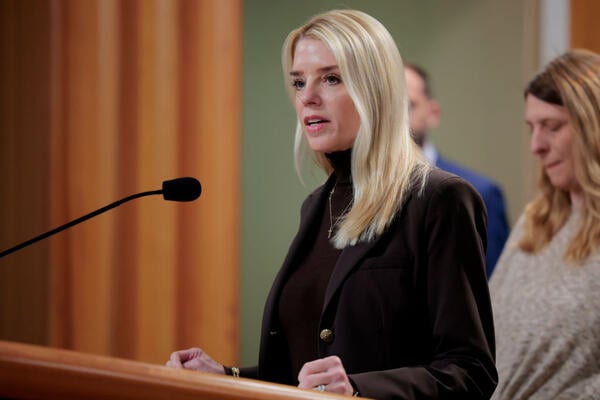According to Gallup, after reaching an all-time low in the past two years, American confidence in higher education has risen to where those expressing “quite a lot” or “a great deal” of confidence is now 42 percent (up from 36 percent), while those with little or no confidence has decreased from 32 percent to 23 percent.
A poll out of New America shows that Democrats and Republicans align with about 42 percent of respondents from both parties saying that higher education is “fine as it is.”
Higher education appears to be experiencing the “thermostatic model” of public opinion, where opinion moves in opposition to government action. The Trump administration attacks on higher ed have triggered some measure of backlash among public opinion, creating a certain rallying effect around the sector. Republicans saying that higher ed is “fine as it is” is essentially a declaration that they’d like to see institutions left alone.
Considering the scope and severity of the attacks, this is not particularly good news, but it is interesting news, and it is news that higher ed institutions should note and make use of moving forward. One of the realities I think everyone in higher ed must embrace is that the future is going to be different from the past and attempts to return to the past are unlikely to be successful, particularly since the return will be predicated on a rose-colored-glasses view of that past, rather than recognizing the real tensions prior to the present assault.
I am a believer in the thinking of Brendan Cantwell, a Michigan State professor who works on issues of institutional structure and operations and who believes in an “impoverished” future. As Cantwell says, “I do not believe Trump will be able to destroy American higher education, but his administration will try, and the sector will suffer.”
The aftermath of the suffering and how public opinion may ameliorate that suffering is what we’re talking about here.
During my post–grad school career as a market research consultant, I learned about something called SWOT analysis, where you draw a plus sign to make four quadrants, headlining the individual boxes with “strengths,” “weaknesses,” “opportunities” and “threats” and then listing the things you can think of that fit under the different categories in the individual boxes.
I will admit, I rolled my eyes the first time I witnessed this exercise, and continued to roll my eyes many times after that, because it often felt like a SWOT analysis was just something to do because you have to do something, rather than a truly useful tool.
For example, when “no one likes our product because it doesn’t work like we claim” is in the weakness category, whatever you might find in the opportunity box isn’t relevant.
That said, when there is something solid and meaningful at the core, threats often do come bundled with opportunities. My messaging around teaching writing and large language models has been to acknowledge the threat, but also to suggest that the existence of these text extruders can be viewed as an opportunity to move toward work that is meaningful to humans.
If we are in the midst of a rise in positive feeling toward higher education, the opportunity to shape public opinion around the attacks and to bolster the defenses must be seized.
Deeper in the data from New America, we see specific alignment around what institutions should be doing. As reported by Kathryn Palmer here at IHE, interpreting the results, “the vast majority of Americans, including both Republicans and Democrats, believe higher education should function as more than a transaction. They say it should not only equip students with the skills and knowledge to succeed in their chosen fields (97 percent of Democrats; 98 percent of Republicans), but also help students become informed citizens (97 percent of Democrats; 89 percent of Republicans) and critical thinkers (97 percent of Democrats; 92 percent of Republicans).”
People also want colleges and universities to do what colleges and universities do. They believe in education and opportunity and research and helping people reach their potential. Those of us who work within or are close observers of higher education understand that while these institutions are significantly flawed and could do better at this work, they also, often and for millions of people … work.
It’s important to recognize that this increased confidence has nothing to do with actions universities have taken thus far. If thermostatic politics are at work—and I think the evidence is significant—it is the outside attacks that have fueled it. It seems as though figures like Chris Rufo are overplaying their hand, as he did again recently in a statement published at the Manhattan Institute in which he declares, “Now, the truth is undeniable. Beginning with the George Floyd riots and culminating in the celebration of the Hamas terror campaign, the institutions of higher education finally ripped off the mask and revealed their animating spirit: racialism, ideology, chaos.”
The recent public opinion polling cited above suggests that a core plurality or majority of the public does not believe this. This is an opportunity.
The unfortunate wrinkle in seizing this opportunity is that what bipartisan supermajorities want from higher ed institutions (skills and knowledge to succeed, informed citizens, critical thinkers) is open to many different interpretations when it comes to actual institutional operations.
Indiana University has recently pivoted to becoming a place where the humanities are almost absent. Those currently in power at the University of Virginia are apparently trying to revivify the past, when it was primarily a finishing school for landed gentry. Florida has put their money down on being “anti-woke.”
Some schools will insist that the future is AI. Others will go the opposite way. As vague as those public desires are, and as unhelpful as they are in determining the specific path an institution must take, they are an excellent guide for how to frame the work of your institution, whatever it might be doing.
It is also a way to push back against things like the gutting of the student loan program, an initiative that will make it hard to impossible to do these things everyone wants colleges to do.
The assault on universities, first prosecuted by people like Rufo and partially fueled—whether intentional or not—by groups like Heterodox Academy before being put to work by Trump, was a narrative not really based in reality but sufficiently plausible to enough people to make things happen.
Resistance starts with a counternarrative. We have enough data to get going.








